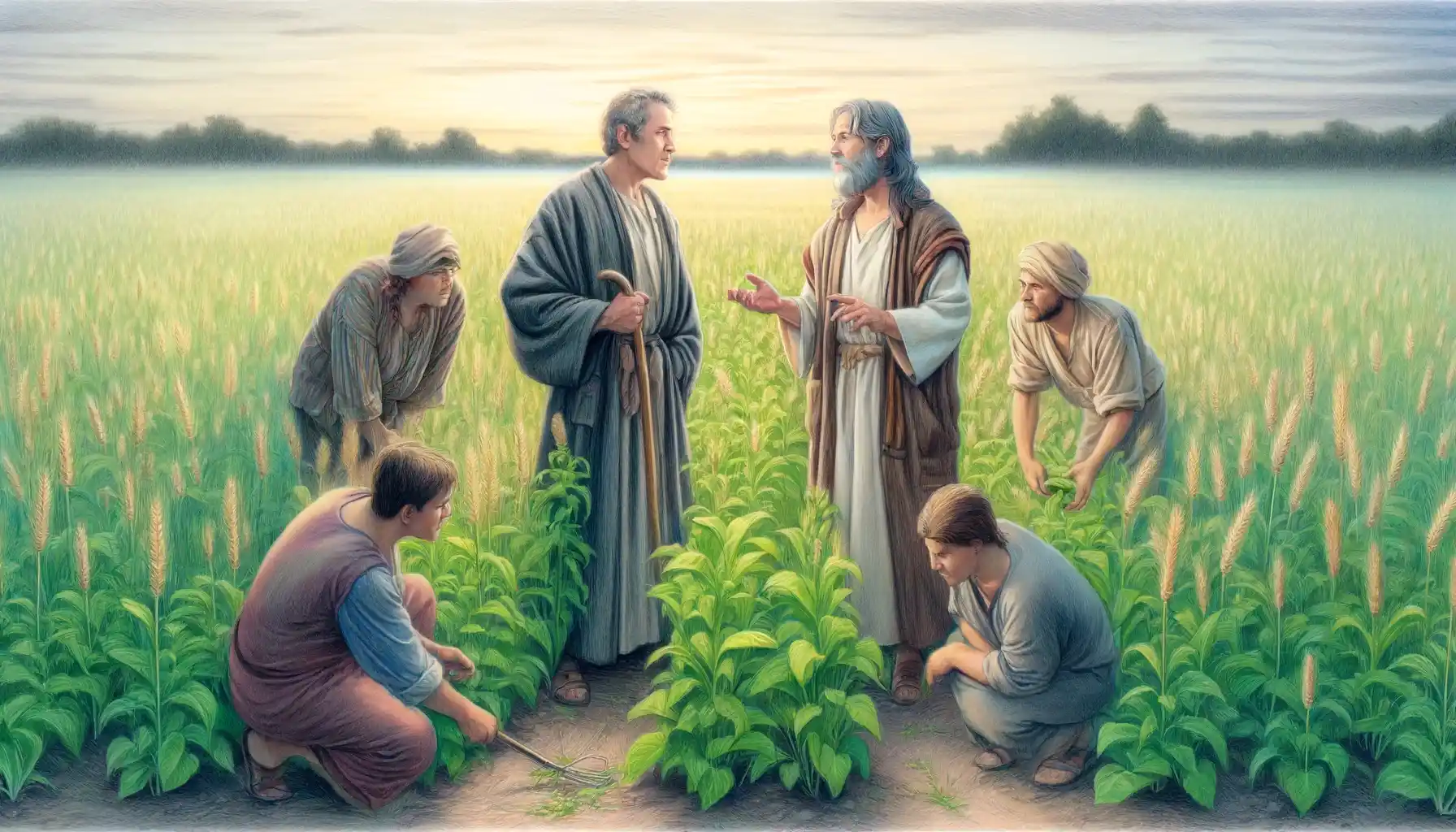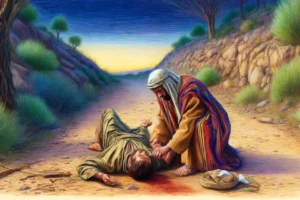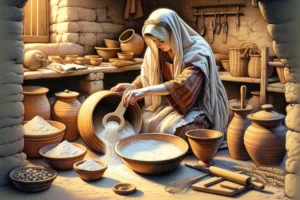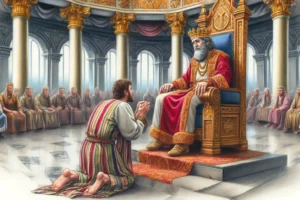
The Parable of the Weeds
The Parable of the Weeds, also known as the Parable of the Wheat and Tares, is a poignant story told by Jesus in the Gospel of Matthew. Here are some quick facts about this parable:
- Context in Matthew: Found in Matthew 13:24-30, it is part of a series of parables that Jesus tells to a large crowd by the lake, illustrating various aspects of the Kingdom of Heaven.
- The Story: In the parable, a man sows good seed in his field. However, while everyone is sleeping, his enemy comes and sows weeds among the wheat and then goes away.
- Growth of Wheat and Weeds: As the wheat sprouts and forms heads, the weeds also appear. The servants of the farmer notice this and ask if they should pull out the weeds.
- Farmer’s Instruction: The farmer instructs them not to pull out the weeds because in doing so, they might uproot the wheat along with them. He tells them to let both grow together until the harvest.
- Harvest Time: At harvest, the farmer will instruct the harvesters to first collect the weeds and tie them in bundles to be burned, and then gather the wheat into his barn.
- Interpretation: Jesus later explains the parable to His disciples, stating that the field is the world, the good seed stands for the people of the Kingdom, the weeds are the people of the evil one, the enemy who sows them is the devil, the harvest is the end of the age, and the harvesters are angels.
- Eschatological Message: The parable emphasizes the final judgment where the righteous and the wicked will be separated—the wicked will be punished, and the righteous will shine in the Kingdom of their Father.
“ ‘No,’ he answered, ‘because while you are pulling the weeds, you may uproot the wheat with them. Let both grow together until the harvest. At that time I will tell the harvesters: First collect the weeds and tie them in bundles to be burned; then gather the wheat and bring it into my barn.’ ”
Matthew 13:29-30 NIV
The Parable of the Weeds, as recorded in Matthew 13:24-30, offers a rich metaphorical narrative that provides profound insights into the Kingdom of Heaven and the reality of good and evil coexisting in the world. This parable, explained by Jesus in a private setting to His disciples, delineates the dynamics of the Kingdom in a fallen world and anticipates the eschatological separation of righteousness from wickedness.
Narrative Structure and Symbolism
The parable describes a scenario wherein a man sows good seed in his field, but an enemy sows weeds among the wheat at night. The emergence of both wheat and weeds together perplexes the man’s servants, who propose removing the weeds. However, the man, representing wisdom and foresight, instructs them to allow both to grow until the harvest to prevent damaging the wheat.
Symbolic Elements:
- The Sower: Represents Jesus or the Son of Man, who sows the good seeds.
- The Field: Symbolizes the world.
- Good Seed: Denotes the people of the Kingdom, embodying righteousness.
- Weeds (Tares): Represent the influence of evil, sown by the devil, and those led astray by his deceptions.
- The Enemy: The devil, who actively disrupts the harmony of God’s creation.
- Harvest: Signifies the end of the age, the culmination of history.
- Harvesters: The angels, agents of divine judgment.
Theological Implications
Coexistence of Good and Evil: One of the central themes of this parable is the persistence of evil within the same sphere as good until the final judgment. This reflects the Christian understanding of the world as a battleground between divine and satanic forces, where human beings are both participants and witnesses.
Divine Patience and Judgment: The farmer’s decision to let both wheat and weeds grow together until the harvest reflects God’s patience and His reluctance to uproot the wicked prematurely, which might also harm the righteous. This suggests a divine strategy of allowing time for repentance and growth, emphasizing mercy and long-suffering.
Eschatological Sorting: The harvest metaphor highlights the eventual, inevitable divine intervention where righteousness will be vindicated and evil permanently dealt with. This eschatological vision reassures the faithful of the ultimate justice and holiness of God’s kingdom.
Moral and Ethical Lessons
Judgment Belongs to God: The parable instructs believers to refrain from judging prematurely or attempting to segregate the good from the bad on their own. This role is reserved for divine agents at the appointed time, which underscores the limitations of human judgment and the supremacy of divine discernment.
Persistence Amidst Evil: For the faithful, the parable encourages endurance and faithfulness even in the face of encroaching evil. It acknowledges the challenges of living in a morally mixed world but calls for trust in God’s ultimate plan and timing.
Hope in Divine Justice: Ultimately, the parable serves as a reassurance to those who feel overwhelmed by the presence of evil in the world. It affirms that while evil is a present reality, it is a temporary one, with a divine resolution awaiting at the end of the age.
In conclusion, the Parable of the Weeds provides a complex, layered understanding of the kingdom of God, addressing the problem of evil and affirming the certainty of divine justice. It navigates the tension between present reality and future hope, offering both a caution against precipitous judgment and a promise of final redemption.
Tag:Angelic Harvesters, Biblical Parables, Christian theology, Coexistence, divine judgment, divine patience, End of Age, eschatology, Final Separation, Good and Evil, Harvest Metaphor, Jesus' Teachings, Kingdom of Heaven, Matthew 13:24-30, moral lessons, Parable of the Weeds, Righteous and Wicked, Wheat and Tares



